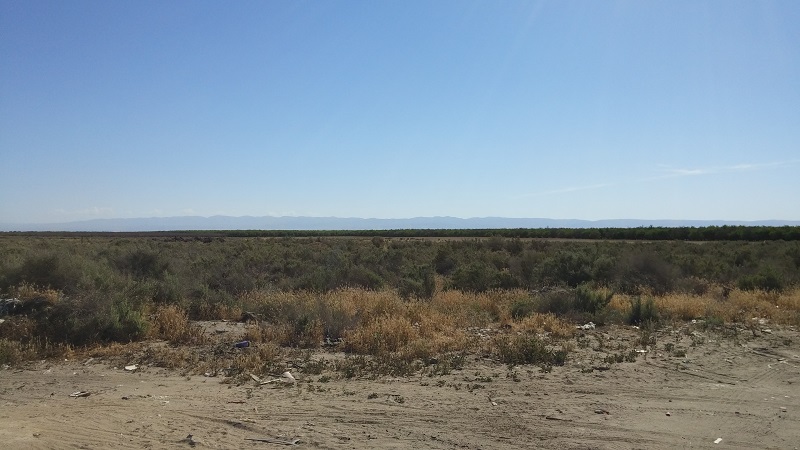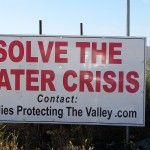The Central Valley in California, running north to south between the Coastal and Sierra mountain ranges, is a vast garden for the world. Flat as a table and dry as a bone, it stretches about 450 miles from top to bottom and varies from 40 to 60 miles across. At roughly 22,500 square miles, it’s about four times the size of Connecticut.
Originally grassland, the valley is now intensely cultivated. Dependant on irrigation for water, the valley grows an astonishing array of crops. Almost anything will grow there including: tomatoes, almonds, rice, grapes, cotton, asparagus, apricots, carrots, pistachios, cattle and their feed, melons, lettuce and much more. For example, as Mark Bittman explained in the New York Times, just two producers in the valley supply 85% of the carrots eaten in America – about 6 million pounds a day. There are even some oil wells in this land of plenty.
The importance of the food from the Central Valley can’t be overestimated. According to the U.S. House of Representatives Committee on Natural Resources, “More than half of the country’s fruits, vegetables and nuts are grown in California,” mostly in the Central Valley.
A farmer with land north of Sacramento once told me that the rich, fine-grained topsoil on his farm went 28 feet deep. The largest rock in the mix was a half inch pebble – hard to imagine in rocky Connecticut, where stone for walls is our best known crop and solid ledge rock may be lurking just below the surface right where you want to dig.
We passed through the southern part of the Valley on our recent California visit. Forsaking our usual route south on the 101 through Santa Barbara and along the coast, we cut west at Paso Robles driving on Rt. 46 to see something new and find a more direct route through Los Angeles to the airport.
The landscape changed dramatically as we headed inland. Rolling hills covered with vineyards morphed into steep hills and narrower valleys with grazing cattle. A sign announced: “No services for 51 miles.” Really? In densely populated California? We drove past the spot where actor James Dean met his demise, through the Cholame Pass and across Bluestone Ridge. As we climbed to the crest of the mountains, the valleys opened up to wide expanses of folded hills draped in golden grass looking as though they were covered in velvet cloth. At the top, past the end of the climbing lane, we began a gradual descent to the Central Valley.
Mile after mile of orchards, the pistachios still dormant but the almonds fully leafed out in bright spring green, stretched before us as the road gently sloped down. A For Sale sign at one spread announced: “Almonds, Pistachios and Open Land – 679 acres.” Not any 40 acre family farms here!
As we approached Interstate 5, the Valley’s main north south artery, we began to see some changes. The crops were more diverse and after miles of not even a house, we began to see a few signs of people and finally arrived at the town of Lost Hills. From the highway, the mountains on the western side of the valley disappeared below the curvature of the earth. Lettuce, tomatoes, hay, table grapes, and much more could be seen growing along the Interstate. When I am King (as I often joke to my family), I’ll have farmers put up a sign in each field naming the crop – I’d just like to know, wouldn’t you?
There was a surprising amount of the most productive farmland in the world lying fallow. It turns out, there’s simply not enough water!
The Central Valley is completely dependant on water from other places to maintain its astonishing productivity. It is blessed with great soil, climate, and topography, but it must bring in water to make it all work.
As we drove through the valley signs displayed the local distress about water problems with messages like: “No Water, No Jobs;” “Solve The Water Crisis;” and “Food Grows Where Water Flows.” The water shortage affects farming livelihoods, food supplies, supermarket prices and life all across California and the rest of the states.
There’s no lack of opinion on the water crisis. There’s also plenty of blame (mostly for the other guy) to go around. It’s a classic struggle between cities and farmers with politicians and policy makers in the middle. Even our airport hotel van driver weighed in, happy to lay the blame on new almond orchards that take a lot of water to get established.
But the real culprit is a lack of rain. Rain and snow falls have been below normal for years with no end in sight. There’s not enough water to go around. Without more rain, growing has to be cut back and fields left fallow. This, of course, means less food and higher prices. Since the valley supplies all of America and a good deal of the world too, we’re all looking at higher costs for food.
Its hard to imagine this lack of rain here in the wet northeast. California’s geography is amazingly diverse with valleys and mountains, beaches and rocky coastlines, rainforests and deserts and wilderness not far from cities. The climate and countryside seem to change every few miles. It’s a bewildering contrast to the northeast where well-watered, lush forests grow on rolling hills for mile after mile.













No Comment